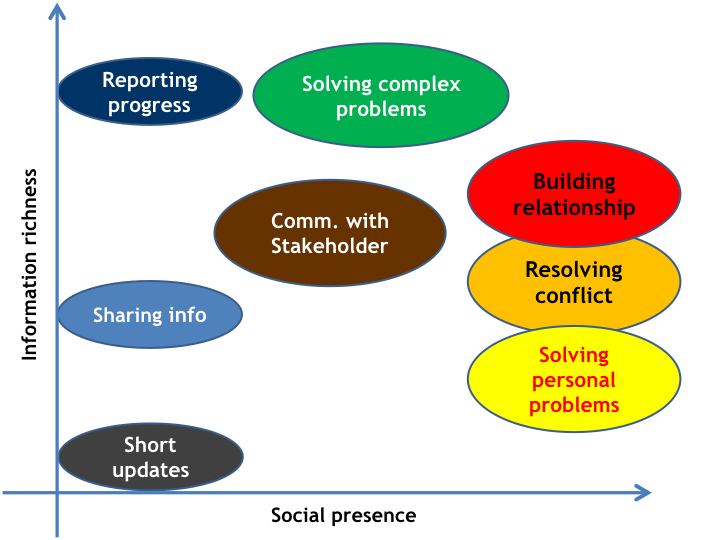Two factors you should consider when choosing the technologies to use
Many discussions with leaders of virtual teams sooner or later lead to the question whether the importance of technology and its role in virtual collaboration is over- or under-estimated. From my personal experience and conversations with highly effective virtual leaders the answer is: it depends. It depends on whether or not the appropriate technology is used for the tasks the virtual team has to complete.
In virtual collaboration technology is a ‘conditio sine qua non’: if it doesn’t work you are stuck. However, assuming technology is available and does work, it should be selected consciously and depending on what you are trying to achieve. Some authors who have written about virtual collaboration state that, even when used appropriately, technology only influences about 20% of the effectiveness of virtual teams. Yet, if inappropriate technology is used it can destroy effectivity altogether?
What is appropriate technology then?
In their book ‘mastering virtual teams’ [tooltip text=”Source: Deborah Duarte & Nancy Tennant Snyder: mastering virtual teams: strategies, tools, and techniques that succeed, published by Jossey-Bass 2006″]D. Duarte et al[/tooltip] describe information richness and social presence as primary factors to select the appropriate technology for maximum productivity in virtual collaboration. In my experience, those are largely sufficient to make a conscious selection of tools for collaborating in a virtual setting.
Information richness: How much informational content has to be shared in one go to accomplish the task? Is it just a short text that can easily be sent via a message system, or are there large files that require significant storage and should be shared via a central storage/collaboration platform? Or is it anything in between?
Social presence: How closely does the team need to interact directly with each other when collaborating/sharing information? Do they need to see each other or is hearing only enough already? Is any ‘presence’ required at all?
Exchanging documents through an online storage system would not support any social presence whatsoever. Whereas a high quality video conference system allows very high social presence.
So, how can you use this in your day-to-day job with a virtual team?
I recommend a 2-step-approach:
First step: Evaluation of tasks
You evaluate the tasks and challenges of the collaboration in your virtual team against the above-mentioned two factors. Placing them into a chart in which the x-axis represents social presence and the y-axis information richness could look like the following:

Second step: Evaluation of technology
You evaluate the technologies you have available in your organisation against the same two factors and place them in the same type chart. You might get something like the following picture:

Overlaying both then provides a good way of choosing the most appropriate technology for your collaboration tasks and challenges in your specific team.
What this also means, and it probably is obvious, is that there is not just one way/technology to deal with each other but one for any given purpose during an ongoing collaboration project. The important point is to choose consciously -which brings me back to my point in the beginning- and not just use the next best thing that happens to be right there.
I personally find this approach relatively simple and yet very helpful to consciously improve the effectiveness in virtual collaboration. I hope you will have similar experiences by using this approach. And if you like to discuss this in more detail please leave a comment or do not hesitate to contact me direct.



